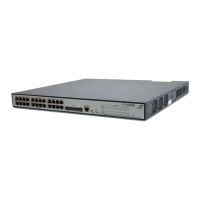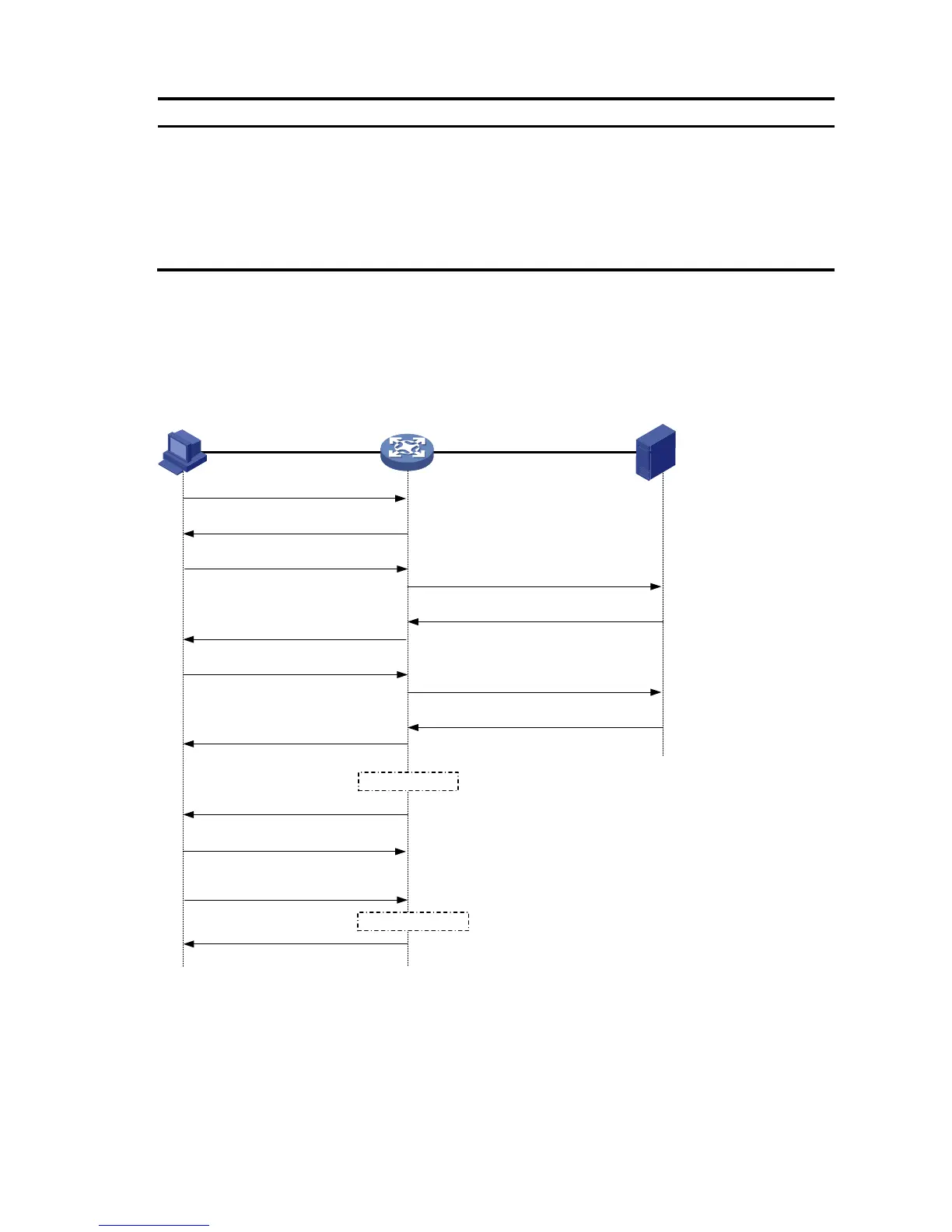325
Packet exchan
e method Benefits
Limitations
EAP termination
Works with any RADIUS server that
supports PAP or CHAP authentication.
Supports only MD5-Challenge
EAP authentication and the
"username + password" EAP
authentication initiated by an
iNode 802.1X client.
The processing is complex on
the network access device.
EAP relay
a shows the basic 802.1X authentication procedure in EAP relay mode, assuming that EAP-MD5 is used.
a. 802.1X authentication procedure in EAP relay mode
EAPOL
EAPOR
(1) EAPOL-Start
(2) EAP-Request/Identity
(3) EAP-Response/Identity
(6) EAP-Request/MD5 challenge
(10) EAP-Success
(7) EAP-Response/MD5 challenge
(4) RADIUS Access-Request
(EAP-Response/Identity)
(5) RADIUS Access-Challenge
(EAP-Request/MD5 challenge)
(9) RADIUS Access-Accept
(EAP-Success)
(8) RADIUS Access-Request
(EAP-Response/MD5 challenge)
(11) EAP-Request/Identity
(12) EAP-Response/Identity
(13) EAPOL-Logoff
...
Client Device Authentication server
Port authorized
Port unauthorized
(14) EAP-Failure
Table 97 When a user launches the 802.1X client software and enters a registered username and
password, the 802.1X client software sends an EAPOL-Start packet to the network access device.
Table 98 The network access device responds with an Identity EAP-Request packet to ask for the client
username.
Table 99 In response to the Identity EAP-Request packet, the client sends the username in an Identity
EAP-Response packet to the network access device.

